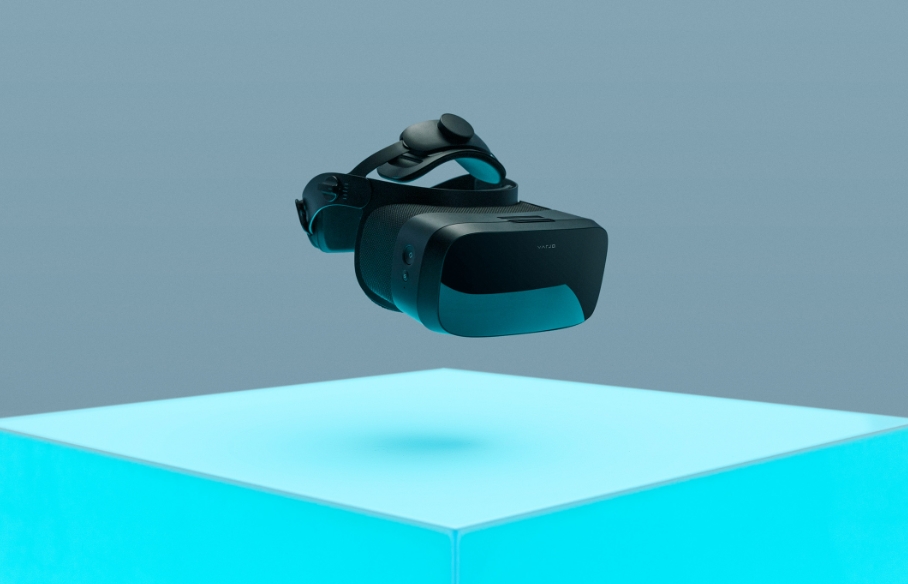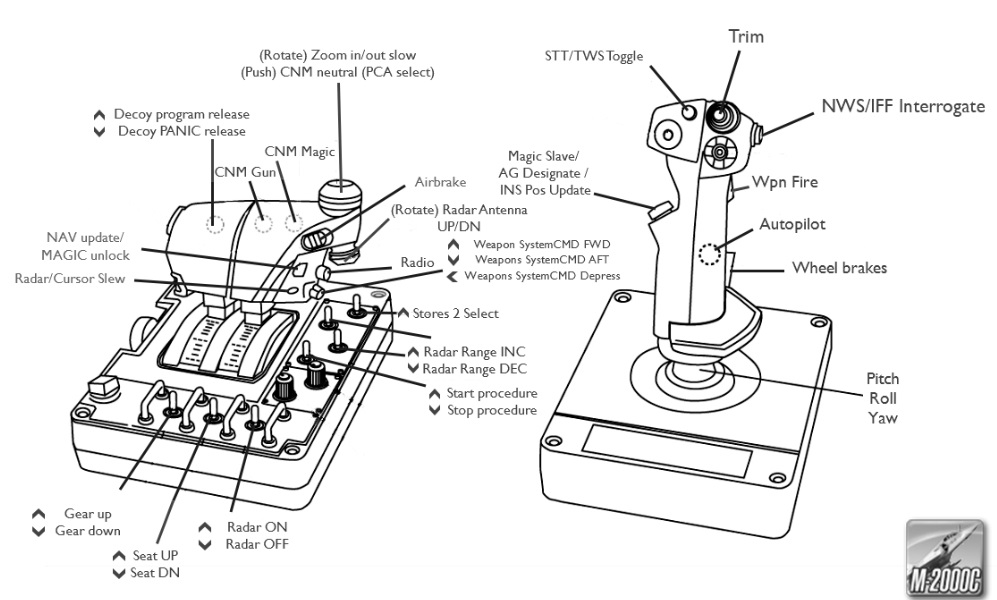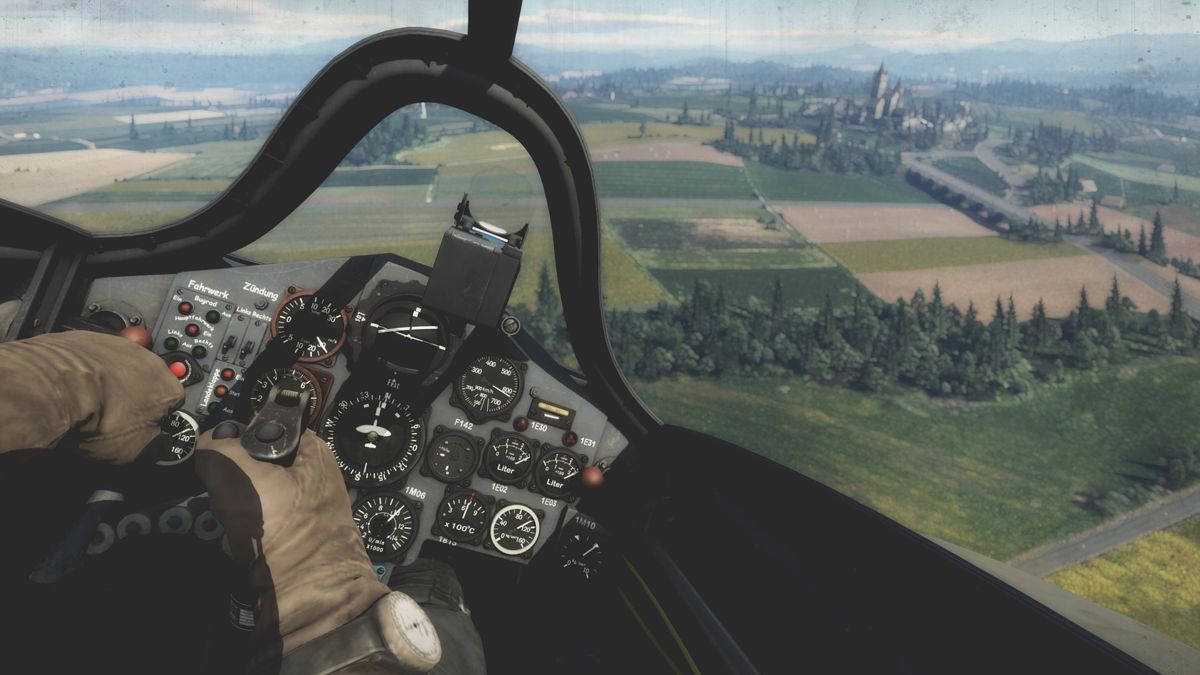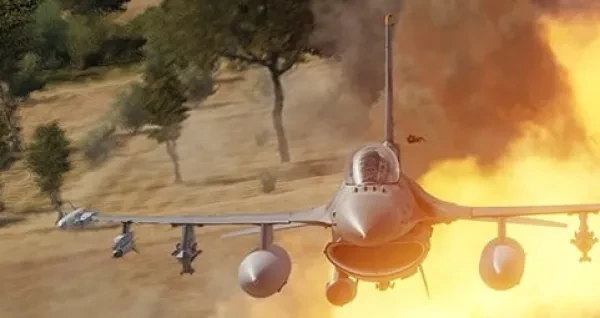
Let there be no doubt in anyone’s mind—DCS is the best in its class in terms of combat flight sims. The realism we have come to know and love from DCS in terms of clickable and interactive cockpits, super-realistic flight models, and state-of-the-art graphics can be found nowhere else. No kidding, really.
Don’t just take my word for it; even former and current pilots can’t stop talking about how great and incredibly realistic DCS is. Moreover, the DCS environment is constantly growing, with more planes, maps, and other modules being added on a regular basis.
Nevertheless, the sheer number of planes available on the platform means that players will have to make some tough choices. Whether you are new to the game or looking to purchase a new module, which plane is best for you depends on a number of factors.
In order to help you make some sense out of the madness, we have listed our top 10 choices for DCS planes which we believe every serious player should try.
So, without further ado, this is our list.
Drumroll please…
10. Saab AJS-37 Viggen, Best for low-altitude penetration and anti-shipping
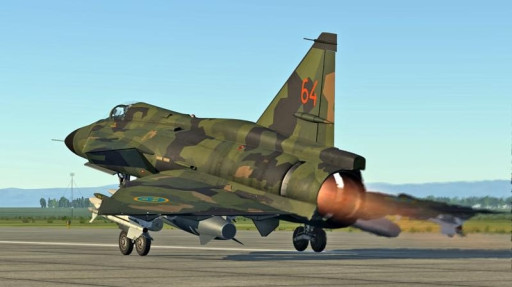
The Viggen (pictured above) was the mainstay of the Swedish Air Force for decades and has been modeled with painstaking detail for DCS.
It turns out that Saab doesn’t only make safe cars—the company also makes kick-butt fighter jets.
Emerging from the peculiar requirements of the Swedish Air Force in the 1970s, the Viggen—or ‘thunderbolt—was ahead of its time when it entered service in 1971. Sporting a delta-wing design and canards, this aircraft was the most advanced fighter jet in Europe for about a decade until the introduction of the Panavia Tornado in 1981.
Swedish designers were well aware of the fact that in the event of a Soviet invasion, the nation’s airfields would be the first to get hit. With that in mind, the Viggen was designed to be operable from stretches of highway and remains one of the only military aircraft to employ a thrust reverser.
Although also available in interceptor and reconnaissance variants, the Viggen was primarily a strike fighter. To this effect, it employed revolutionary technologies such as terrain-following radar and an advanced central computer. When paired with the Rbs 15 missile, the platform was a potent threat to enemy shipping in Swedish coastal waters and the Baltic Sea.
Players choosing the Viggen will be able to immerse themselves in Cold War Sweden with exciting scenarios, flying at ridiculously low altitudes to take out Soviet installations in pinpoint strikes.
Fun points for the AJS 37 Viggen:
- A fully-programmable mission computer utilizing cartridges - like the Nintendo 64.
- Utilize terrain following radar to fly at extremely low altitudes - watch the power lines though!
- Carry a vast array of combat loads; including bombs, air-to-air missiles, anti-ship missiles and other ordinance.
- Intercept enemy ships out in the stormy mists of the Baltic sea.
- Fly on discreet reconnaissance missions to report on the positions of enemy formations and surface fleets.
9. Mirage 2000C, Best for early-era multirole and fly-by-wire controls

The Mirage 2000 (pictured above) is still the main workhorse of the French Air Force almost four decades after its introduction into service.
The Mirage 2000 is the last meaningful addition to the Mirage family. Outwardly, it bears a strong resemblance to the Mirages III and V, but that’s where the similarities end. The Mirage 2000 utilizes a vastly more powerful engine as well as advanced fly-by-wire controls.
For more than two decades, the Mirage 2000 was the mainstay of the French Air Force. It also served in the air forces of India, Brazil, and the UAE, among other nations. It is what’s called a "pilot’s plane"—easy and fun to fly with an impressive performance envelope.
The Mirage 2000 was one of the first aircraft to fully adapt fly-by-wire controls. This allowed the platform to retain the delta-wing design of its predecessors while also showing impressive maneuverability at different speeds.
The avionics of the Mirage 2000 were highly advanced for its era. The jet’s look-down/shoot-down radar offered impressive air-to-air capabilities, especially when paired with the Matra Super 530D missile.
The aircraft was also optimized for ground strikes and could employ laser guided munitions when equipped with a targeting pod.
This combination of abilities meant that the Mirage 2000 was one of the world’s first truly multirole fighters, albeit with an avionics suite that was rather primitive by today’s standards.
Fun points for the Mirage 2000C:
-
Superior air-to-air capabilities at high and medium altitudes.
-
Awesome maneuvers and tight turning circles - thanks to the improved engine and fly-by-wire controls.
-
Full multirole suite—fight your way in, bomb the target, and fight your way out. All in a day’s work.
-
Precision strike capability when equipping the aircraft with the Damocles targeting pod and laser-guided bombs. Knock those hardened aircraft shelters out of existence!
-
Impressive anti-shipping capabilities when equipped with two AM.39 Exocet missiles. Watch out, it’s the Falklands all over again!
8. AV-8B N/A Harrier Jump Jet, Best for night attacks
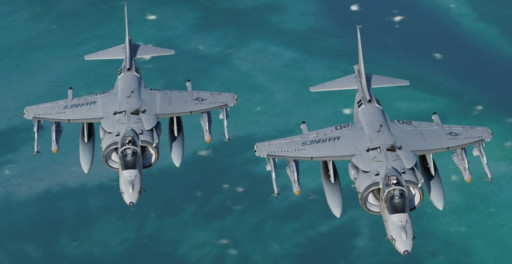
The AV-8B (pictured above) is a second-generation Harrier and the first V/STOL capable aircraft on DCS.
This rather late iteration of the Harrier family is so far the only ‘official’ V/STOL capable aircraft on the DCS platform. Of course, maintaining true vertical takeoff and landing capabilities comes at a cost, and accordingly the AV-8B is easily outmatched in air-to-air battles.
The AV-8B’s forte is close air support and strike and in that role the aircraft is truly excellent. Moreover, the N/A (night attack) variant which is featured in DCS integrates the GEC-Marconi Forward Looking Infrared (FLIR) camera—it’s the glass cone visible on the aircraft’s nose. This feature makes the aircraft particularly suited for nighttime attacks.
Unfortunately for some, this variant of the Harrier lacks a radar. The N/A’s ‘sister’, the AV-8B Harrier II Plus, does have a radar. However, that variant has not been modeled for DCS so far. Again, this means that the N/A is severely restricted in terms of air-to-air engagements and can’t make use of such indispensable tools as the AIM-120 AMRAAM.
Of course, V/STOL is its own brand of fun. Although vertical takeoff is rarely practiced—especially with a full fuel and weapons load—vertical landings are the norm. Takeoffs are shortened too by adjusting the thrust nozzle towards a 60-degree angle.
The air-to-ground suite of this aircraft is impressive. It includes various cluster bombs (for taking out troop concentrations and SAM sites), Mark 80 series general purpose bombs, GPS-guided JDAM bombs, laser-guided bombs, and AGM-65 Maverick missiles which are many pilots’ favorites for taking out tanks.
This impressive arsenal of air-to-ground weaponry means that the AV-8B N/A can make short work of any ground target. Whether the target is a fixed command and control installation, or an armored column, its day is set to get a whole lot worse when the Harrier appears on the horizon.
Fun points for the AV-8B N/A:
-
Go nuts with the Harrier’s V/STOL capabilities. Hover over the USS Tarawa or come in for a high angle landing.
-
Utilize the nose mounted FLIR to spy on enemy formations from a safe distance at night. Once you find a worthwhile target, lock your weapons to it and let the onboard computer do the rest of the work. Or at least most of it.
-
Loiter over the battlefield for hours at a time. Whenever your fuel tank runs dry, engage the In-Flight Refueling system and take a ‘sip’ from the nearest airborne tanker.
-
Attack high-value targets with surgical accuracy, utilizing laser or GPS guided bombs, or infra-red guided mavericks.
7. F-14 Tomcat, Best for carrier operations, fleet air defense and long-range intercepts
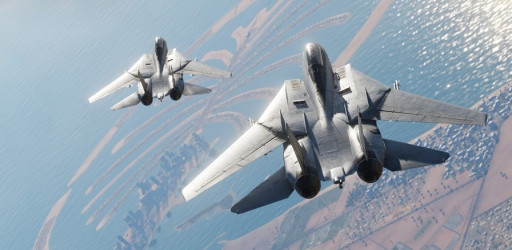
The F-14 Tomcat (pictured above) was pictured in the blockbuster film "Top Gun".
Ah yes, the venerable Tomcat. In addition to being a moviestar, this aircraft is also one of the best interceptors ever built. Not only that, it operates off of carriers.
The Tomcat employs a variable-geometry wing design. That is just a fancy way of saying that its wings change their sweep. In high-speed flight, the wings are swept back to resemble a delta-wing design. As the aircraft transitions to and from low speeds, such as during takeoff, landing, or WVR engagements, the wings sweep forward.
The variable-geometry of the wings guarantees that the aircraft can perform best in different flight conditions. Impressive. But that’s not all. The Tomcat has yet another ace up its sleeve—its radar.
Long-range and high-powered, the F-14 Tomcat’s radar is a force to be reckoned with. When paired with an integrated data link, the two systems afford the F-14 a level of situational awareness unrivaled by contemporary fighters.
What’s more, in most configurations the F-14 carries the AIM-54 Phoenix air-to-air missile. This ultra-long-range missile is the bane of Soviet bombers. It gives the Tomcat an almost unfair ability to "snipe" enemy aircraft from well over 100 miles away. The exact range of the Phoenix is classified though.
The Tomcat is a two-man ship, requiring both a pilot and a backseat RIO to operate. However, this module is still accessible in single player modes with the RIO position occupied by the AI bot Jester—a not so subtle reference to Top Gun.
Although optimized for long-range engagements, the Tomcat is surprisingly nimble for its size. Smaller fighters that try to jump the Tomcat on DCS and force a WVR turning fight are likely to receive an unpleasant surprise when they see how tight this fighter can turn and quickly achieve a gun solution.
Depending on the variant, the Tomcat also has a limited ground attack capability.
Fun points for the F-14 Tomcat:
-
Relive the glory of Top Gun with Jester in the backseat.
-
Enjoy superior air-to-air performance, whether in high altitude long range missile duels or ‘down and dirty’ dogfights with guns and sidewinders.
-
Relish some of the best situational awareness available on any DCS fighter module.
-
Ever tried to land on a ship, at high seas, and at night? Enjoy the particular challenges that come with mid-sea carrier operations.
6. Mirage F1, Best for point air defense and frontline strike
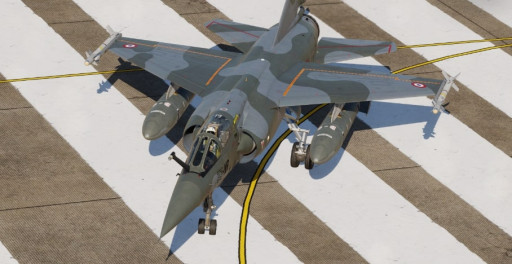
The Mirage F1 (pictured above) is a Cold War classic.
DCS Mirage F1CE FIRST IMPRESSSIONS & FLIGHT
Some of you might have stopped and taken a look around. Why is the Mirage F1 on this list? What makes this relic from the Cold War so special? The answer may surprise you. Technically speaking, nothing really sets this fighter apart from the competition. It simply has what I would call "character".
First fielded as a replacement for the venerable Mirage III and entering service in the early 1970s, this latest DCS module was eagerly anticipated by thousands of players. The Mirage F1 brings some grit back into the game. Lacking the sophisticated avionics that tend to take the fun out of everything, this fighter is a platform that lets the pilot shine.
The crude avionics in the cockpit are likewise paired with a rough-around-the-edges, no-nonsense weapon suite that simply sets out to get the job done. These include French weapons such as the Matra Magic and Durandal, in addition to American favorites such as the sidewinder ‘Lima’ variant.
Fast, basic and rather crude, this latest module lets players relive military aviation in its heyday before automated computers took all the fun out of flying.
Fun points for the Mirage F1:
-
Zoom below enemy radars at breakneck speeds and pop-up right before reaching the target zone to plaster the enemy. Relive the challenges and thrills of Cold War pilotage.
-
Work your way through 1970s era avionics and learn about radar azimuth, AoA indicators and engine RPM. Can’t get any better for us plane geeks.
-
Enjoy a broad selection of air-to-air and air-to-ground weaponry and learn how to choose the best loadout for the mission.
-
Take the model to the edge of its performance envelope—and beyond.
5. F-86F Sabre, Best for 1950s era dogfights

The Sabre (pictured above) earned its place in history by shooting down MiGs in Korea.
F-86 Sabre Vs Mig-15 Dogfight | Digital Combat Simulator | DCS | Korea 1950 | 4K
This beauty is perhaps one of the most iconic products of the jet fighter "golden age” ofthe 1950s. Fast, maneuverable, and packing quite a punch with its six nose-mounted 50 cal cannons, this jet was the undisputed king of MiG Alley in the Korean War.
Pilots who flew this aircraft often looked back at it with nostalgia and remembered it as being one of the best experiences of their careers. All pilots agreed that it was responsive to flight controls and offered a smooth and pleasurable ride every time.
Although mainly a day fighter—the rather rudimentary radar was only useful for providing gun solutions—this warbird also had a secondary ground attack capability. The below-wing hardpoints could carry an assortment of rocket pods and dumb bombs. However, as the F-86 lacked any advanced technology to target those weapons, pilots had to make do with point, shoot, and hope for the best.
The integrated cannons were extremely potent, absolutely shredding targets in the air and, more often than not, causing severe damage to unarmored and lightly armored ground vehicles in strafing runs.
As a 1950s era fighter, the Sabre naturally had rather short legs. Nevertheless, its range could be substantially extended by mounting underwing drop tanks.
Players choosing this module will get to experience going head-to-head with the Sabre’s archnemesis: the Soviet MiG-15. The two aircraft fought countless duels in the Korean War. Many of those engagements took place on a stretch of the Yalu River bordering China, which was later nicknamed MiG Alley.
Although the two aircraft had roughly equal aerodynamic performance, the Sabre still had a leg up. Its gunsight was ahead of its time and allowed Sabre pilots to come out on top in most engagements.
Fun points for the F-86 Sabre:
-
Enjoy the smooth-as-silk flying experience that was the Sabre’s hallmark.
-
Find enemy MiGs, shout ‘Tally-Ho’ into your radio, drop your tanks and relive the exciting dogfights of MiG Alley.
-
Learn as you play by managing the requirements of this 1950s era jet. Multitask and check your various knobs and dials. This was way before onboard computers automated tasks.
-
Go up against the MiG-15—the Sabre’s nemesis—in exciting head-to-head battles. Twist and turn until you achieve a gun solution, then pull the trigger when your piper aligns with the target.
4. A-10C Warthog, Best for CAS and tank-busting
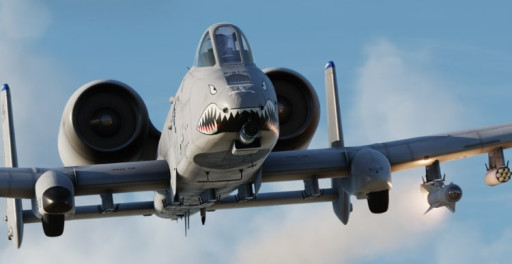
The A-10 Warthog (picture above) looks mean, because it is.
FLYING THE MOST REALISTIC A-10 SIMULATOR! - DCS World A-10C II Gameplay
So ugly it’s beautiful—there, I said it! This recent module is a substantial upgrade over the previous DCS A-10 module and includes improved graphics, a wider choice of weapons and a Helmet Mounted Sight.
Developed primarily as a CAS aircraft, the primary weapon of the Warthog is the GAU-8 30 mm Gatling gun. It’s the cigar-shaped muzzle you see sticking out of the Warthog’s nose. Firing upwards of 60 rounds per second, the gun makes use of High-Explosive Incendiary or Armor-Piercing Incendiary Depleted Uranium rounds. The latter are deadly against tanks.
The gun also has a very distinctive (and terrifying) sound. Type out “Brrrrrrrrrt!” and everyone in the DCS community will know what you are referring to.
Apart from its smoking gun—pun intended—the Warthog can be integrated with a host of other weaponry. Upgraded avionics mean that the platform now supports guided weapons for pinpoint strikes. It also carries almost every other general purpose bomb, rocket pod, and air-to-ground missile in the American inventory, including the venerable Maverick and the anti-raditaion HARM missiles.
Built to last, the Warthog’s robust build can take quite a punishment. Even after having your wing and tail shot-up and suffering multiple system failures you can still get your ship home—more often than not. The twin-engine design is also purposeful—after losing one engine the other can still power your flight back to the nearest friendly airfield.
It should be noted, however, that this aircraft is strictly air-to-ground. Lacking a radar, ungainly, and not at all maneuverable, the Warthog is a sitting duck when it finds itself forced into an air-to-air engagement. This is why it only operates in theaters where air-superiority has already been established. Although the Warthog can carry two sidewinders for self-defense, that is really nothing more than an insurance strategy.
Full of grit and crass in a fun way, the A-10C Warthog is a favorite for pilots who wish to get into the fight as quickly as possible and churn up mud with their bombs, rockets, and guns.
Fun points of the A-10C:
-
Enjoy avionics and weapons upgrades over the previous module, including a glass cockpit and Helmet Mounted Sight.
-
Enjoy a broad range of new weaponry.
-
Lay your gun’s boresight on the nearest enemy tank, pull the trigger and watch the fireworks.
-
Feel invincible over the battlefield as your aircraft continues to fly after taking substantial hits. Don’t overdo it though!
3. MiG-29 Fulcrum, Best for WVR engagements
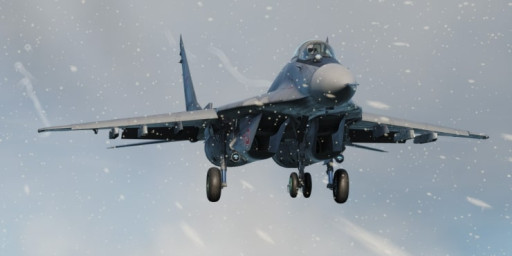
The MiG-29 Fulcrum (pictured above) is one of the best dogfighters of the Cold War era.
The Mig-29 Is Still Relevant | BVR Vs F-16 Viper | Digital Combat Simulator | DCS |
Beautiful and deadly—these two simple adjectives perfectly describe the Fulcrum. Feared by its enemies and adored by its crews, the Fulcrum represents the pinnacle of late Soviet-era fighter design.
Built to face the F-16 head-to-head over the battlefields of Europe, the Fulcrum is optimized for air-to-air engagements. In this respect, it out-matches almost everything in its class due to its excellent thrust-to-weight ratio and superb maneuverability.
That’s not all. The Fulcrum also has several tech advantages that can make the difference between life and death. First there is the IRST—a system which allows the Fulcrum to track and target enemy fighters passively. The IRST does not emit the radio waves that would alert the enemy’s RWR to the fact that they are being tracked.
The platform also utilizes a Helmet Mounted Sight which is lethal when paired with the AA-11 Archer air-to-air missile. This allows the pilot to aim the missile by simply looking at the target, thereby permitting high-off boresight missile tracking. To put it simply, the Archer can fly and hit its target even if the Fulcrum is pointing in a different direction altogether.
This ace in the hole makes the Fulcrum a force to reckon with in WVR engagements, otherwise known as dogfights. In the BVR field the aircraft is also a tough cookie. The AA-12 Adder, the Russian answer to the AMRAAM—and affectionately called “AMRAAMski”—is just as deadly as its American counterpart. Sometimes even more so.
Despite being optimized as an all-weather fighter/interceptor, the Fulcrum nonetheless retains limited ground-attack capabilities. The fighter can carry an array of rocket pods and unguided bombs for this purpose. Although the aircraft’s avionics are really not designed with that intent, they can nonetheless provide good-enough targeting information when deploying air-to-ground munitions.
A pleasure to fly, every pilot who has flown the Fulcrum could not help but fall in love with its grace in the sky.
Fun points of the MiG-29 Fulcrum:
-
Enjoy stalking your opponent without alerting them to your presence by switching off the radar and relying on the IRST.
-
Achieve high off-boresight missile kills when pairing the Helmet Mounted Sight with the Archer missile.
-
Take the aircraft out for a joy ride in clean configuration. Enjoy zipping and zooming through valleys or fly to the edge of space at 60,000 feet—your choice.
-
Give your buddies on the ground a helping hand by finding enemy forward bases and leveling them with bombs, rockets and strafing runs.
2. JF-17, Best for stand-off ground attack and SEAD
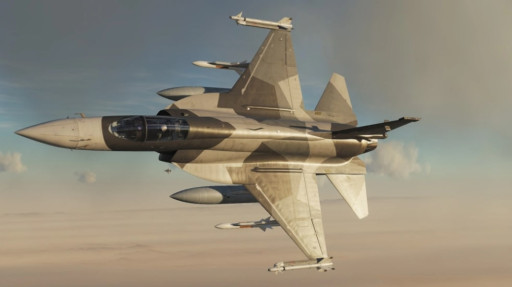
The JF-17 (pictured above) is among the most popular aircraft on the DCS platform.
JF-17 Thunder Vs F/A-18C Hornet Dogfight | Digital Combat Simulator | DCS |
Affectionately nicknamed the "Jeff", the JF-17 has developed a loyal following in the DCS community. This is no surprise, given that the aircraft is extremely versatile and sports state-of-the-art avionics.
The Jeff emerged from a joint Chinese-Pakistani collaboration. Pakistan is the main customer for this aircraft and has been using it both as its main frontline fighter and as a sort of stop-gap measure while replacements for its aging Mirage and J-7 fleets can be found.
Nimble and compact, the JF-17 has a relatively small radar signature. When armedwith the LD-10 anti-radiation missile and the GB-6 glide bomb, the platform becomes an effective tool for negating enemy SAM sites. These SEAD missions—as they have come to be called—are by their very nature risky, but given the right loadout, the Jeff is up to the task.
The JF-17also has an advanced stand-off capability and can deploy the fearsome C-802AK anti-ship missile as well as the CM-802AKG missile with man-in-the-loop functionality. This feature allows the pilot to guide the missile and change its courseusing a console in the cockpit after it has already been fired.
In terms of air-to-air, the Jeff is yet again excellent. Utilizing an advanced radar and data-link, the Jeff affords its pilots top-notch situational awareness. The jet's high maneuverability makes it a difficult foe in WVR engagements. BVR engagements against the Jeff are also no walk in the park as it can deploy the Chinese SD-10 missile which is more or less on par with the American AMRAAM.
Fun points of the JF-17:
-
Utilize the CM-802AKG man-in-the-loop function to guide your missile mid-flight from the safety of your cockpit and follow its camera feedback until impact.
-
Power down your radar and make use of the Jeff’s data-link to stalk bandits and then jump them when they least expect it.
-
Go on dawn raids to interdict enemy shipping. Release your anti-ship missiles from a safe distance and let them do the work while you hightail it back to friendly airspace.
-
Go after those pesky SAM sites using anti-radiation missiles and stealthy glide bombs.
1. F-16C Viper, Best for pretty much everything
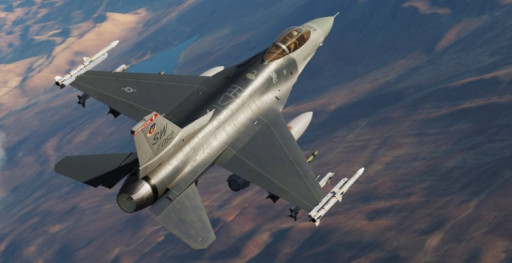
The F-16 (pictured above) is almost perfect in all respects.
F-16 Viper The Ultimate Bandit Sanitizer | Digital Combat Simulator | DCS |
There is a reason why this has been the main frontline fighter of the USAF for almost four decades and running. The Viper is widely considered one of the best military jets ever designed. A true jack of all trades, this platform can deliver no matter what the mission is. Air-to-air, air-to-ground, or anything in between, the Viper is up for the task.
It is hard to decide on what the best characteristics of the Viper are simply because it is almost perfect in every respect . However, since it was originally intended as an air-to-air weapon, we can start from there.
The Viper’s bubble canopy affords the pilot exceptional visibility in all sectors. Moreover, the jet’s powerful engine and small airframe gives it a greater than 1:1 thrust-to-weight ratio. This means that the plane can turn on a dime and make circles around its opponents.
The Viper’s advanced radar and data-link affords the pilot excellent situational awareness, enabling him or her to judge threat levels and choose when and where to enter into an engagement. The venerable AIM-120 AMRAAM is the main air-to-air weapon of the F-16 and allows it to achieve a sure kill from a safe distance.
If forced into a WVR engagement, the Viper still has an ace in the hole. The AIM-9X - the latest sidewinder variant - has a seeker which can be slaved to the pilot’s Helmet Mounted Sight. This allows the pilot to achieve high off-boresight shots and evens the playing field by negating the Fulcrum’s advantage with the Archer.
The air-to-ground capabilities of the Viper are also nothing to be taken lightly. The aircraft can mount most bombs and rocket pods in the American inventory, including GPS guided JDAM bombs which are excellent for precision strikes against stationary targets. When equipped with a targeting pod, the Viper can also deliver laser guided munitions with pinpoint accuracy.
Moreover, the HARM missile givesthe fighter a SEAD capability while the Harpoon equips it for anti-shipping missions.
Weapons aside, pilots can’t get enough of the F-16’s aerodynamics. It is described as being extremely pleasurable to fly and pilots and observers alike are always impressed by the seemingly impossible stunts which the F-16 can get away with.
Think I am pushing it a little? Watch a performance of the Thunderbirds aerobatics team and you will understand.
Fun points for the F-16C Viper:
-
Outmatch all opponents in air-to-air battles. Zip and zoom around your foes and make their heads turn.
-
Unleash an awesome array of bombs, rockets and missiles against mobile or fixed ground targets.
-
Carry out precision strikes against high-value targets utilizing GPS or laser guided munitions.
-
Fly the plane in clean configuration to see how graceful this beauty is in the sky.



